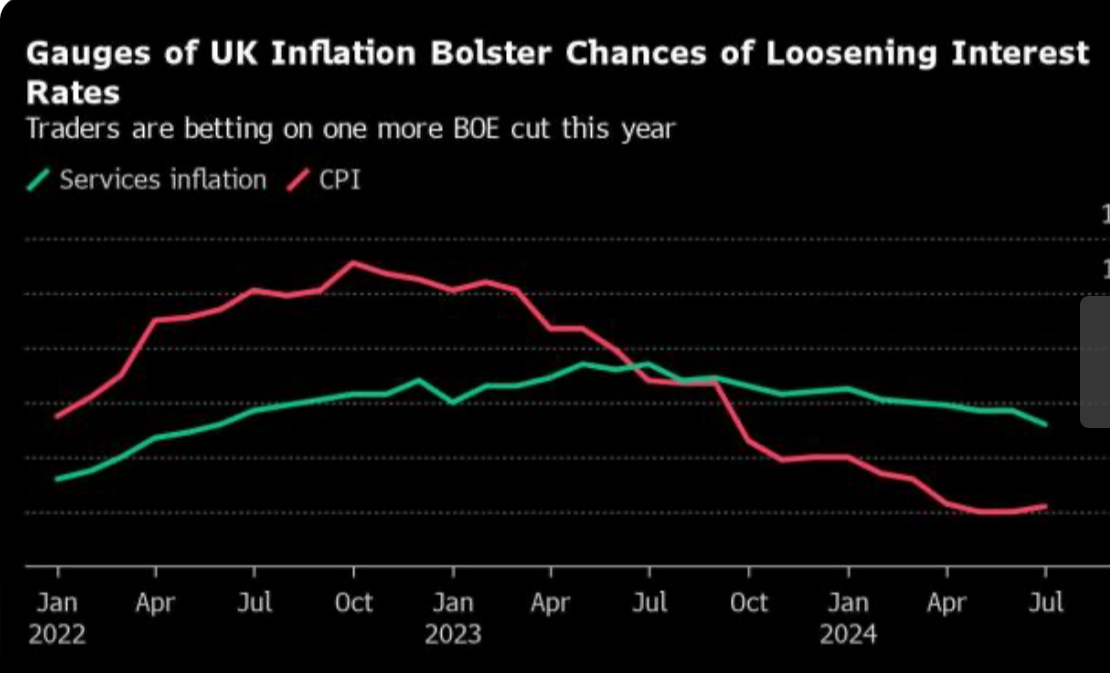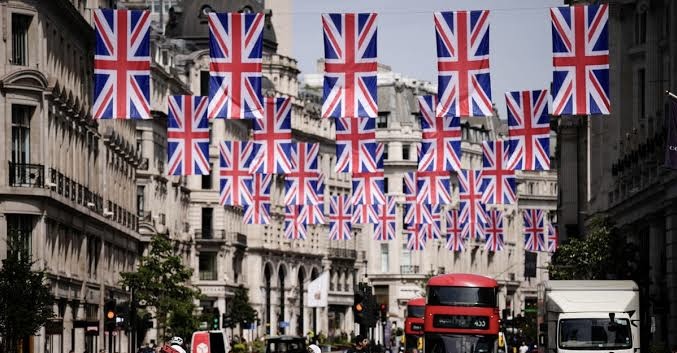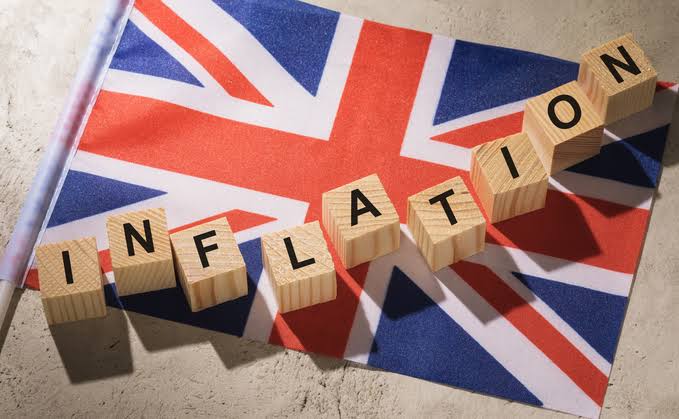London – The latest figures on UK inflation have surprised economists and traders alike, revealing a slight increase in the rate but not as much as many had anticipated. This has led to renewed discussions about the Bank of England’s (BOE) next steps concerning interest rates.
The Consumer Prices Index (CPI) rose by 2.2% in July, following a 2% increase in both May and June, according to data released on Wednesday by the Office for National Statistics (ONS). While this marks the first uptick in inflation this year, it was still below the 2.3% expected by economists and the 2.4% forecasted by the BOE.

Source: Office of National Statistics
Despite the increase in headline inflation, a significant cooling in services and core price growth has eased some concerns that inflationary pressures might persist. This development has prompted traders to adjust their expectations for the future direction of UK interest rates. As a result, many now anticipate further rate cuts from the BOE.
Yael Selfin, Chief Economist at KPMG UK, commented on the situation, stating, “This softer inflation data should provide some reassurance to the Monetary Policy Committee (MPC), especially given that the BOE’s own forecasts had suggested a sharper rise.”
As traders digest the new data, there has been a noticeable shift in the market’s outlook. According to reports, the pound fell by 0.3% to $1.2820, though it remains the best-performing currency among the Group of Ten (G10) countries this year. This strong performance has largely been driven by the belief that the BOE would maintain relatively high interest rates. However, with the current inflation figures, that belief is starting to waver.
One of the key components of the inflation data that the BOE closely monitors is services inflation, which showed signs of cooling. Services inflation dropped to 5.2% in July, down from 5.7% in June, marking the lowest reading in over two years. This figure was also below the BOE’s forecast of 5.6%. Core inflation, which excludes volatile items like food and tobacco, reached its lowest level since September 2021.
The UK has taken longer to control inflation compared to other major economies, but the latest data suggests that the country is now on a more stable footing. The UK’s inflation rate is currently performing better than that of the eurozone and is comparable to the United States’ harmonized rate.
BOE Governor Andrew Bailey has been cautious about reducing borrowing costs too quickly, warning that doing so could undermine the progress made in controlling inflation. Nevertheless, traders are increasingly confident that the BOE will move to cut rates later this year, likely in November or December.
Although UK inflation reached the BOE’s target of 2% in May and June, the central bank anticipates it will rise again to nearly 3% before gradually cooling off in 2025. The slight resurgence in July was mainly driven by the base effect of last year’s sharp decline in energy prices, which has now fallen out of the annual calculations.
The ONS also noted that prices in restaurants and hotels were among the biggest drags on inflation in July. This pullback was partly attributed to the unwinding of the so-called “Taylor Swift effect,” which had temporarily boosted prices during her Eras tour in the UK. Additionally, falling airfares and package holiday prices contributed to the slowdown in services inflation, the UK’s largest sector.
Despite these factors, the BOE remains concerned about the potential for persistently high services inflation and wage growth, which could complicate efforts to sustainably bring down inflation. However, the central bank has downplayed the recent strength in services prices, attributing it to volatile components.
The new inflation figures come at a critical time, midway through a week filled with significant economic data releases. Earlier in the week, data showed unexpected resilience in the labor market, with unemployment dropping in the three months to June. Although wage growth and job vacancies have eased, the labor market remains a key focus for the BOE as it assesses the broader economic landscape.
UK Inflation: The Path Ahead

Looking ahead, gross domestic product (GDP) data expected tomorrow could further complicate the BOE’s decisions. The central bank has warned that a strong economy could pose additional risks to inflation, making it more challenging to maintain control over rising prices.
As the UK navigates this complex economic environment, the BOE faces a delicate balancing act. While the latest inflation figures suggest that pressures may be easing, the road ahead remains uncertain. With traders now betting on further interest rate cuts, all eyes will be on the BOE’s next moves as it seeks to steer the economy through these turbulent times.
UK inflation, while slightly higher, remains a critical concern for policymakers and market participants alike. The coming months will be crucial in determining whether the UK can maintain its economic stability while addressing the persistent challenges of inflation.
For more news and updates on the general financial market, stay tuned to DeyThere



















































































































